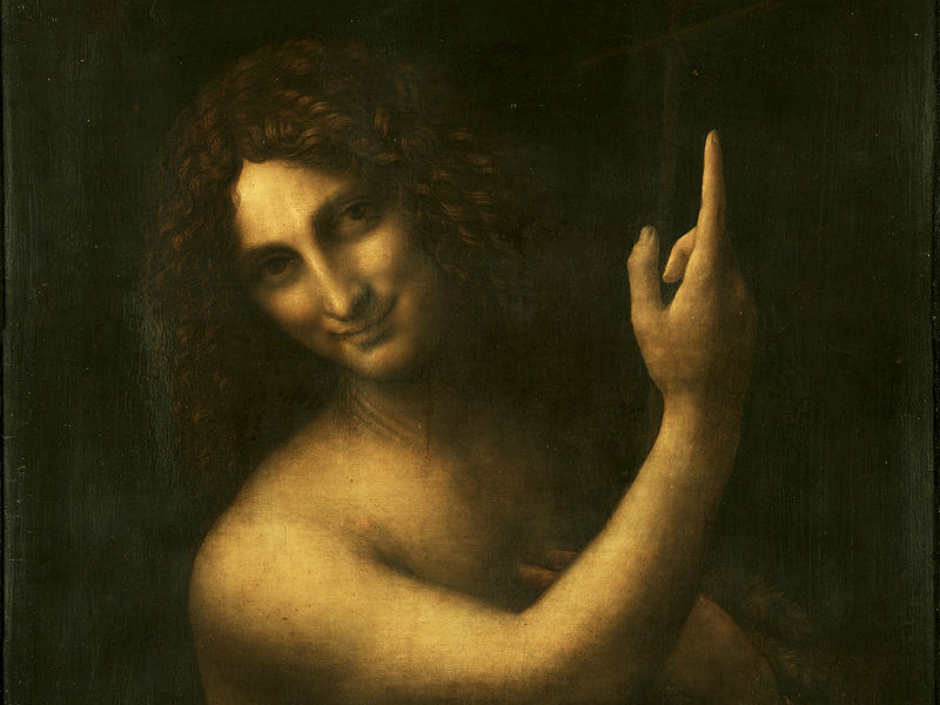In the early 16th century maps were rare and often inaccurate. Leonardo produced several accurate maps such as the town plan of Imola. It was created in order to win the patronage of Cesare Borgia. Borgia was so impressed that he hired him as a military engineer and architect. Leonardo also produced a map of Chiana Valley in Tuscany, which he surveyed, without the benefit of modern equipment, by pacing the distances. In 1515, Leonardo produced a map of the Roman Southern Coast which is linked to his work for the Vatican and relates to his plans to drain the marshland.
Recent research by Donato Pezzutto suggests that the background landscapes in Leonardo’s paintings depict specific locations as aerial views with enhanced depth, employing a technique called cartographic perspective. Pezzutto identifies the location of the Mona Lisa to the Val di Chiana, the Annunciation to the Arno Valley, the Madonna of the Yarnwinder to the Adda Valley and The Virgin and Child with St Anne to the Sessia Valley.

Leonardo was not a prolific painter, but he was a most prolific draftsman, keeping journals full of small sketches and detailed drawings recording all manner of things that took his attention. As well as the journals there exist many studies for paintings, some of which can be identified as preparatory to particular works such as The Adoration of the Magi, The Virgin of the Rocks and The Last Supper. His earliest dated drawing is a Landscape of the Arno Valley, 1473, which shows the river, the mountains, Montelupo Castle and the farmlands beyond it in great detail.
Among his famous drawings are the Vitruvian Man, a study of the proportions of the human body; the Head of an Angel, for The Virgin of the Rocks in the Louvre; a botanical study of Star of Bethlehem; and a large drawing (160×100 cm) in black chalk on coloured paper of The Virgin and Child with St. Anne and St. John the Baptist in the National Gallery, London. This drawing employs the subtle sfumato technique of shading, in the manner of the Mona Lisa. It is thought that Leonardo never made a painting from it, the closest similarity being to The Virgin and Child with St. Anne in the Louvre.
Other drawings of interest include numerous studies generally referred to as “caricatures” because, although exaggerated, they appear to be based upon observation of live models. Vasari relates that if Leonardo saw a person with an interesting face he would follow them around all day observing them. There are numerous studies of beautiful young men, often associated with Salai, with the rare and much admired facial feature, the so-called “Grecian profile”.These faces are often contrasted with that of a warrior. Salai is often depicted in fancy-dress costume. Leonardo is known to have designed sets for pageants with which these may be associated. Other, often meticulous, drawings show studies of drapery. A marked development in Leonardo’s ability to draw drapery occurred in his early works. Another often-reproduced drawing is a macabre sketch that was done by Leonardo in Florence in 1479 showing the body of Bernardo Baroncelli, hanged in connection with the murder of Giuliano, brother of Lorenzo de’ Medici, in the Pazzi conspiracy. With dispassionate integrity Leonardo has registered in neat mirror writing the colours of the robes that Baroncelli was wearing when he died.
painting by Leonardo, Salvator Mundi, depicting Jesus Christ holding an orb sold for a world record $450.3 million at a Christie’s auction in New York, 15 November 2017. The highest price previously paid for a work of art at auction was for Pablo Picasso’s Les Femmes d’Alger, which sold for $179.4 million in May 2015 at Christie’s New York. $300 million, for Willem de Kooning’s Interchange, sold privately in September 2015 by the David Geffen Foundation to hedge fund manager Kenneth C. Griffin, was formerly the highest known sale price for any artwork.
Leave a comment